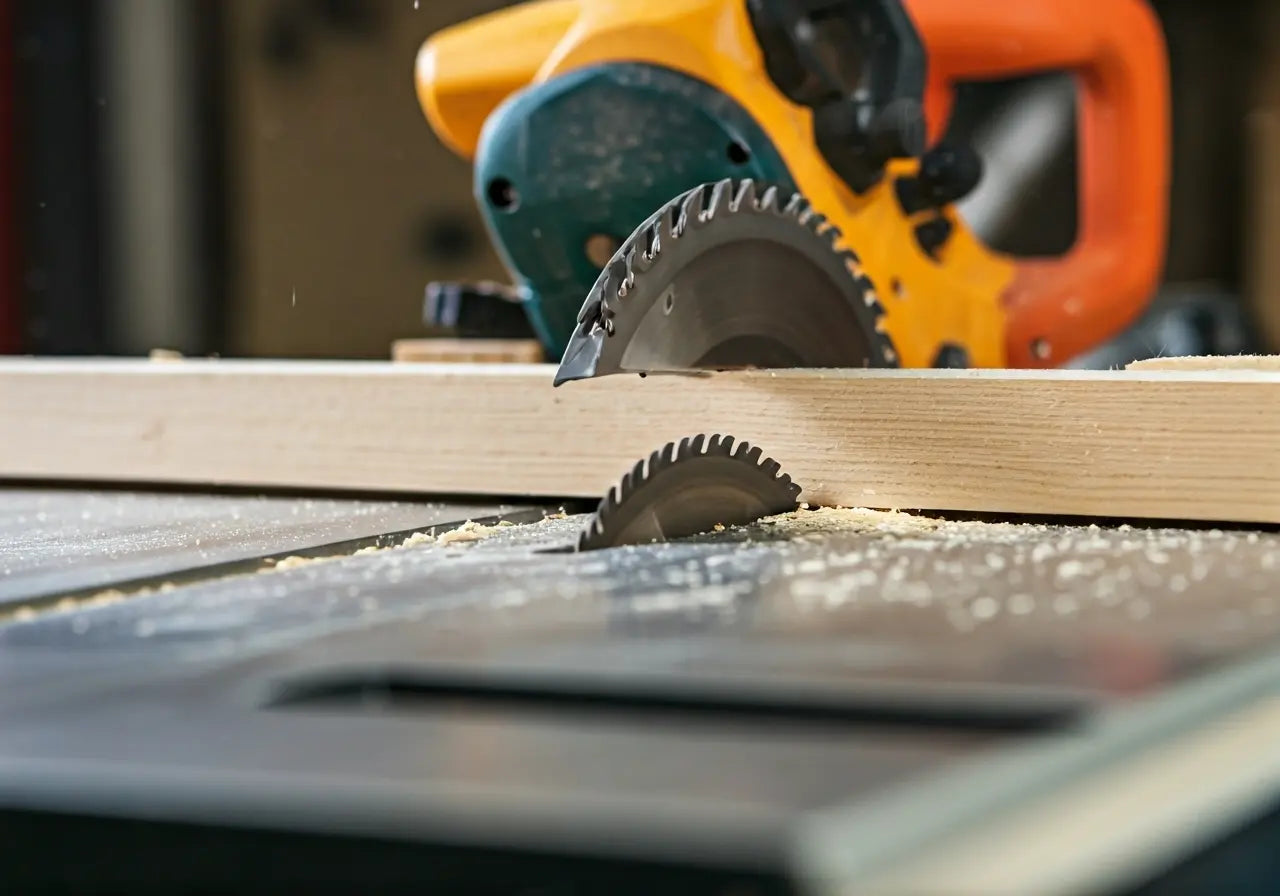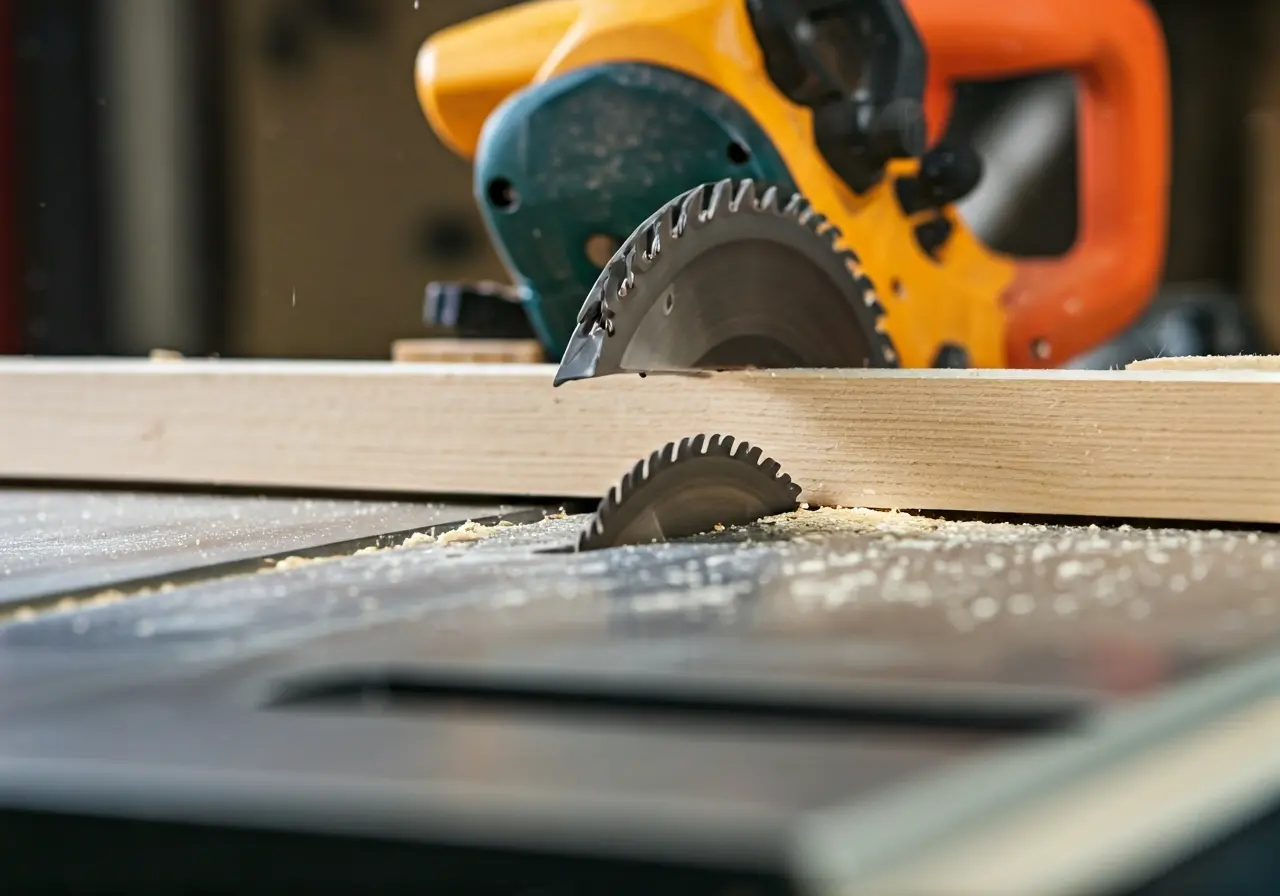Table saws are an essential tool for any serious woodworker, offering precision and versatility for a wide range of projects. However, mastering their use can be a challenging yet rewarding endeavor. In this blog, we will explore key techniques and tips to help you achieve perfect cuts every time.
Understanding Your Table Saw: Components and Functions
Before achieving precision cuts, it’s crucial to understand the basic components of your table saw and their specific functions. This knowledge forms the foundation for all advanced techniques. The centerpiece of your table saw is the blade, the component responsible for the cutting action. It’s powered by a motor that varies in horsepower, affecting the cutting power and the type of materials you can work with. Understanding the specifications of your motor and blade can greatly influence the outcome of your work.
Equally important is the table itself, which provides stability and support. Most table saws come with a flat, smooth surface that allows wood to glide efficiently. Additionally, the saw’s fence helps guide your material to ensure a straight cut. Familiarizing yourself with the adjustment mechanisms of the fence can make a significant difference when executing your cut lines. Finally, consider the miter gauge, which is pivotal for angled cuts. Ensuring it’s properly calibrated is essential to avoid mistakes.
Essential Safety Tips for Using Table Saws
Safety is paramount when working with table saws. Here, we discuss protective gear, safe handling practices, and emergency procedures that every woodworker should know. Always start by donning appropriate protective gear, such as safety goggles and ear protection, to safeguard yourself against debris and noise. Additionally, wearing snug-fitting clothing is crucial to prevent any fabric from getting caught in the saw.
Establishing a clean and organized workspace can dramatically reduce the risk of accidents. It’s wise to regularly inspect your table saw for any signs of wear or damage before use. Knowing your tool well can help you detect problems and address them promptly. In cases of emergency, always have an accessible and functioning blade guard. Furthermore, ensure that you have easy access to the power switch so you can quickly turn off the machine if necessary.
Choosing the Right Blade for Your Project
Different projects require different blades. We’ll guide you on how to select the appropriate blade types for varied cutting needs, ensuring cleaner cuts and prolonging tool life. Consider the material you’re working with and choose a blade with the corresponding teeth count. For instance, fewer teeth blades are more suitable for ripping wood, while blades with a higher tooth count deliver smoother finishes for crosscutting. Additionally, the type of blade matters based on the material composition, such as carbide-tipped for longevity.
Another aspect to think about is the kerf width, which influences the amount of material removed during cuts. A thinner kerf can result in less waste and requires less power, while a thicker kerf is often stronger and more stable. Finally, maintaining your blades sharp, whether through professional sharpening services or DIY methods, ensures they perform optimally over time. Such due diligence ultimately results in a significant difference in the quality of your cuts and the wear on your saw motor.
Setting Up Your Table Saw for Precision
Proper setup is crucial for precision cuts. Learn how to align, adjust, and calibrate your table saw to get the most accurate results possible. Start with leveling your table saw using a spirit level—a perfectly aligned table is essential for precision. Next, focus on the alignment of the fence. A misaligned fence can result in binding, burning, and inaccurate cuts, so regularly check its parallelism with the blade.
Calibrating the miter gauge correctly prevents skewed and inaccurate angled cuts. Ensure your gauge is set to the desired degree before engaging the blade with the material. Beyond alignment, you’ll need to verify the blade height and angle settings. Adjust these for the specific requirements of each project to achieve the desired cut depth and angle. Regular maintenance and adjustments keep your saw’s performance at its peak, allowing you to create with confidence and efficiency.
Techniques for Making Perfect Cuts
Achieve perfect cuts with these tried-and-true techniques. From crosscuts to rip cuts, we’ll cover the methods and best practices professionals rely on. Begin by ensuring your workpiece is properly supported and secured, reducing the chance of kickback or shifting which could jeopardize the cut. Implement the use of a push stick when completing narrow rips to keep hands safely away from the blade.
When making crosscuts, utilizing a sled can significantly improve accuracy. This apparatus holds the material in place and guides it through the saw, allowing for repeatable and consistent crosscuts. Furthermore, understanding feed rate is vital—moving too quickly can cause chipping, while moving too slowly may burn the wood. By honing these skills and techniques, your efficiency and precision in woodworking will noticeably improve.
Maintaining Your Table Saw for Optimal Performance
Proper maintenance extends the life of your table saw and ensures ongoing precision. Discover how to clean, lubricate, and store your equipment effectively. Regularly cleaning the saw, especially the surfaces and mechanisms where dust accumulates, ensures smooth operation. Moreover, lubrication of moving parts such as the blade height adjuster and fence rails prevents unnecessary friction and wear.
Additionally, conducting routine inspections for damage or wear can assist in early identification of potential faults before they escalate. Always store your table saw in a dry, temperature-controlled environment to prevent rust and other weather-induced damage. By taking deliberate care of your table saw, you can rely on this essential tool’s optimal performance for years, reinforcing each project’s potential with every cut.
Achieving Precision and Mastery
Mastering a table saw is a journey of practice, patience, and knowledge. By understanding your tools, prioritizing safety, and honing your skills, you can unlock the full potential of your woodworking projects. Remember, perfect cuts every time come from both preparation and continuous learning.






Hinterlasse einen Kommentar
Diese Website ist durch hCaptcha geschützt und es gelten die allgemeinen Geschäftsbedingungen und Datenschutzbestimmungen von hCaptcha.